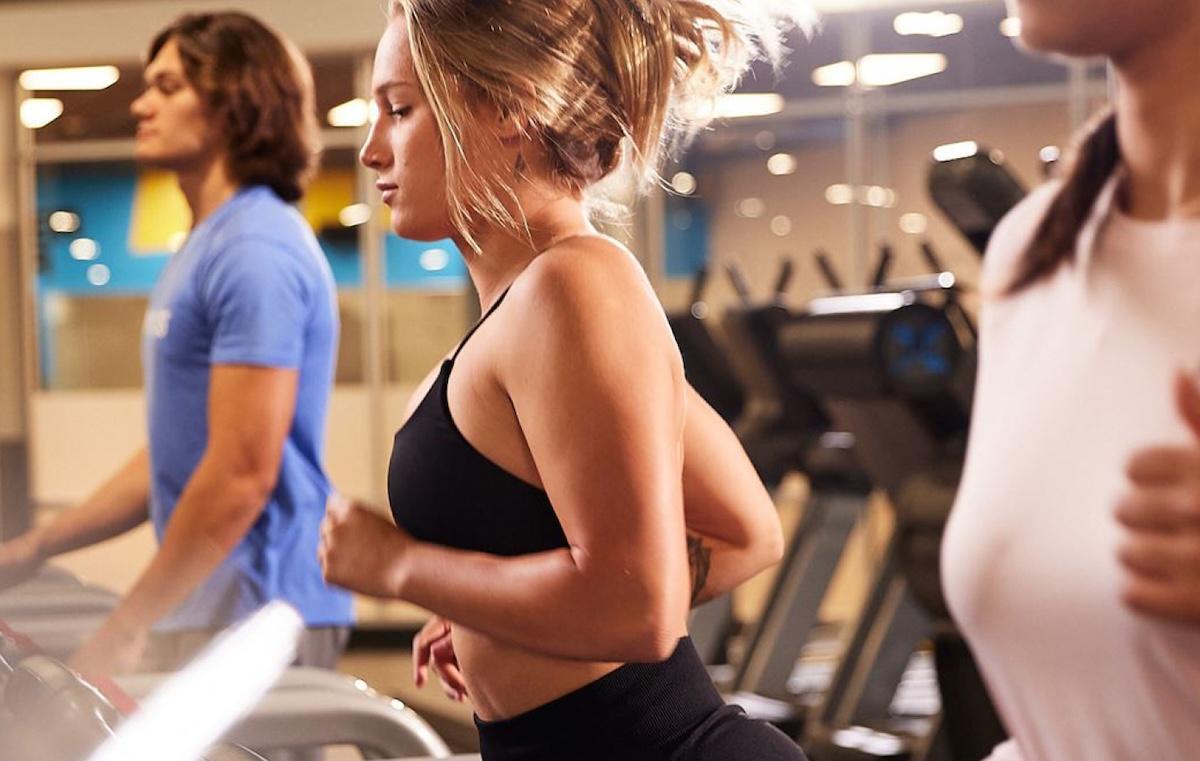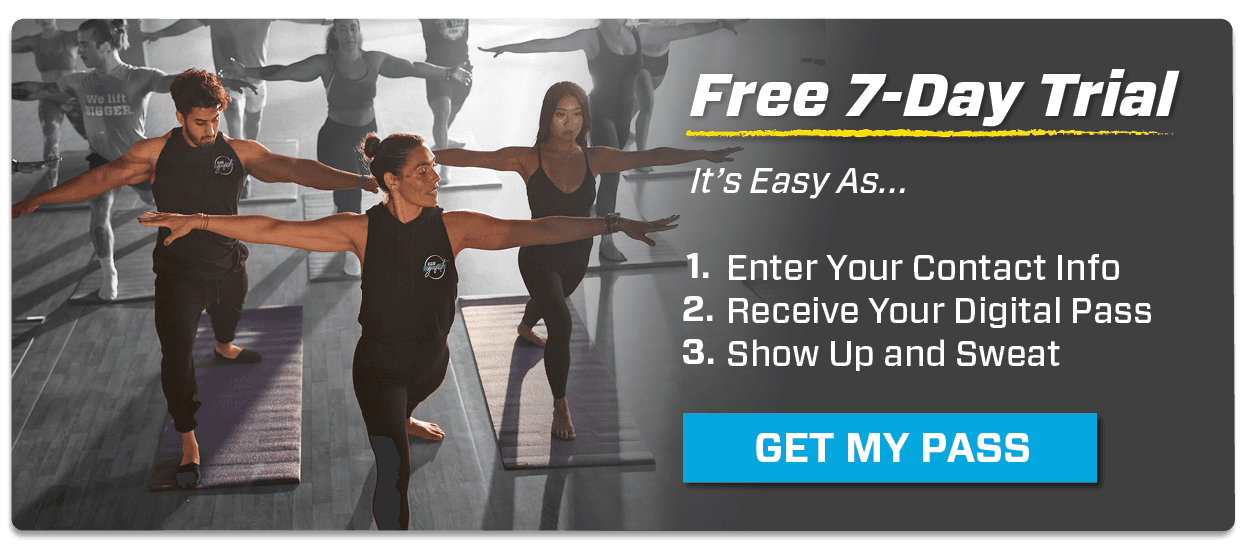STRENGTH TRAINING FOR RUNNERS
Fitness Tips
Oct 31, 2023 • 8min read
Runners are known to have impressive endurance and strength. It’s a common misconception that runners can thrive on cardio alone, without the need for strength training. Many believe that running itself is sufficient to build the required strength. While running undoubtedly improves cardiovascular fitness and endurance, it often neglects critical aspects of muscular strength and balance. Strength training for runners is essential to enhance power, prevent injuries and achieve optimal performance. Neglecting this crucial component can leave runners more susceptible to muscle imbalances, weaknesses and the risk of overuse injuries, ultimately hindering their progress. To reach their full potential, runners should embrace strength training as an integral part of their overall fitness regimen.
If you are a runner, strength training may be the hidden gem that can elevate your performance. In this article, we’ll delve into the top runners’ strength training exercises, the importance of incorporating them into your regimen and how to seamlessly make them a part of your routine. And remember, don’t worry if you need additional guidance – that’s why personal trainers at EōS are here to provide expert support and tailor these exercises to your specific needs and goals.
WHY WEIGHT TRAINING FOR RUNNERS IS IMPORTANT
Whether you are preparing for a race or just want to improve your everyday running routine, it’s essential to understand why strength training for runners of all levels is indispensable.
1. Injury Prevention
Running can be tough on your joints and muscles. By strengthening the muscles surrounding these areas, you could reduce the risk of injuries. A stable foundation can help you maintain proper form and prevent imbalances that may lead to strains or sprains.
2. Improved Endurance
Building a stronger core and lower body can enhance your running stamina. When your muscles are more resilient, you can maintain your pace for longer distances, pushing your limits.
3. Increased Speed
Weight training for runners can increase your power output, making each stride stronger. This translates to improved speed and faster race times.
4. Increased Resilience
Runners’ strength training can improve your overall resilience to physical stress. It helps your body recover more efficiently, reducing the risk of overuse injuries and allowing you to bounce back faster from hard workouts.
5. Enhanced Running Economy
Running economy refers to the energy cost of running at a particular pace. Weight training for runners can help improve this by making your muscles more efficient, allowing you to run longer and faster with less effort.
6. Better Muscle Balance
Strength training can address muscle imbalances, which are common in runners. By strengthening weaker muscles and ensuring even development, it reduces the likelihood of injuries and ensures balanced muscle engagement during runs.
7. Better Form
A strong core and hip muscles can improve your running posture and stride, making your movements more fluid and efficient. This reduces the risk of fatigue-related form breakdown.
8. Improved Bone Health
Strength exercises for runners are excellent for maintaining and improving bone density, which is especially important for older runners. Strong bones are less prone to stress fractures and other bone-related issues.
Now that we understand why runners should incorporate strength training, let’s dive into some of the best exercises to help you achieve your running goals.
BEST STRENGTH TRAINING EXERCISES FOR RUNNERS
1. Squats
Squats are one of the best strength training exercises for runners. They strengthen your quads, hamstrings and glutes, which are vital for generating power in your stride. Perform squats with proper form and gradually increase the weight as you get stronger.
2. Deadlifts
Deadlifts work wonders for your posterior chain – the muscles in your lower back, glutes and hamstrings. A strong posterior chain contributes to better posture and reduces the risk of lower back pain.
3. Lunges
Lunges help to strengthen your quads, hamstrings and glutes while also improving your balance. They closely mimic the motion of running, making them a functional exercise for runners.
4. Planks
A strong core is essential for maintaining good form while running. Planks are a great exercise to build core strength and stability. As your core gets stronger, you’ll find it easier to maintain proper posture during long runs.
5. Hip Abduction/Adduction
These exercises target the muscles around your hips, which play a crucial role in stabilizing your pelvis while you run. This stability is essential for injury prevention and proper running mechanics.
6. Step-Ups
Step-ups strengthen your glutes, quads and hamstrings, mimicking the motion of running uphill. They are an excellent exercise for runners looking to improve their climbing ability.
7. Push-Ups
Although primarily seen as an upper body exercise, push-ups engage your core, shoulders and chest. A strong upper body helps with arm drive and posture while running.
8. Resistance Band Exercises
Resistance bands are a versatile tool for runners. They can be used for various exercises to target different muscle groups. You can use them for leg lifts, lateral leg raises or even upper-body exercises.
HOW TO INCORPORATE STRENGTH TRAINING INTO YOUR RUNNING ROUTINE
Striking a balance between cardio and weight training for runners is important to achieving your goals. Here’s a simple plan to get you started:
- Frequency: Aim for 2-3 strength training sessions per week, alongside your running schedule. This allows for adequate recovery and prevents overtraining.
- Prioritize Core Work: Always start with core exercises like planks and hip abduction/adduction. A strong core is the foundation of good running form.
- Mix It Up: Vary your strength training routine to prevent plateaus and ensure all muscle groups are targeted.
- Rest Days: Don’t forget to schedule rest days to allow your muscles to recover. Your body needs time to rebuild and grow stronger. While at the gym, you can focus on lighter activities to aid in recovery. Consider stretching exercises, yoga or pilates to maintain flexibility and circulation, or take advantage of the sauna to soothe and relax your muscles. Additionally, hydrating and fueling your body is essential to promote recovery.
STRETCHING FOR RUNNERS
In addition to runners’ strength training, stretching can be a valuable tool in a runner’s arsenal. Runners often have tight muscles, and stretching can improve flexibility, reduce the risk of injury and enhance overall performance. Here are some effective stretching routines for runners:
Pre-Run Warm-Up Stretching:
- Dynamic Leg Swings: Swing one leg forward and backward while standing, gradually increasing the range of motion. This dynamic stretch helps loosen up the hip flexors and hamstrings.
- Butt Kicks: As you jog in place, kick your heels up towards your glutes. This stretch warms up the quads and hip flexors.
- High Knees: Lift your knees as high as possible with each step as you jog in place. This helps warm up the hip flexors and strengthens your core.
- Walking Lunges: Take a step forward into a lunge, then push off your front foot to bring the other leg forward. This stretch targets the hip flexors, quadriceps and hamstrings.
Post-Run Cool-Down Stretching:
- Standing Quadriceps Stretch: Stand on one leg and bring your opposite heel towards your glutes. Hold your ankle with your hand to stretch the quadriceps. Keep your knees close together and maintain balance.
- Calf Stretch: Place one foot forward and one foot back, keeping both heels on the ground. Lean forward to stretch the calf of the back leg. Repeat with the other leg.
- Hamstring Stretch: Sit on the ground with one leg extended and the other bent. Reach for your extended leg’s foot, keeping your back straight. This stretch targets the hamstrings.
- Hip Flexor Stretch: Kneel on one knee with the other leg bent at a 90-degree angle in front. Gently push your hips forward to stretch the hip flexors. Repeat on the other side.
- IT Band Stretch: Stand with your feet hip-width apart and cross one leg in front of the other. Lean to the side of the crossed leg, keeping your upper body upright. This stretches the iliotibial (IT) band.
- Seated Forward Bend: Sit with your legs extended in front of you. Hinge at your hips and reach forward towards your toes. This stretches the lower back, hamstrings and calves.
- Cat-Cow Stretch: Get on your hands and knees and alternately arch your back upward (cat) and then drop your belly down (cow). This stretches and mobilizes the spine.
It’s ideal to incorporate stretching into your weekly routine, not just after runs. Consider participating in Yoga or Pilates Group Fitness Classes, which can enhance flexibility and strength. Additionally, dedicating time to Assisted Stretching Sessions can provide a more targeted and effective way to improve your range of motion and flexibility. Try out the Assisted Stretching Program at EōS and book your Complimentary 60-Minute Flexy Stretchy Sesh today, currently available at select locations.
WORKING WITH A PERSONAL TRAINER
If you’re serious about taking your running performance to the next level, consider working with a personal trainer. A personal trainer can create a customized strength workout for runners that aligns with your running goals and keeps you motivated. They can also provide valuable guidance on proper form and technique, reducing the risk of injury.
Incorporating strength training for runners into your routine is a surefire way to improve your performance, reduce the risk of injury and become a more efficient runner. Whether you choose to hit the gym, explore Assisted Stretching or collaborate with a personal trainer, consistency is key. Remember, becoming a stronger runner doesn’t happen overnight, but with perseverance and the right training you’ll be well on your way to crushing your running goals.








